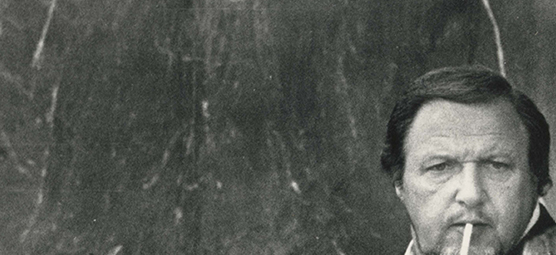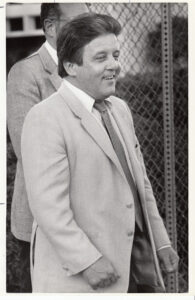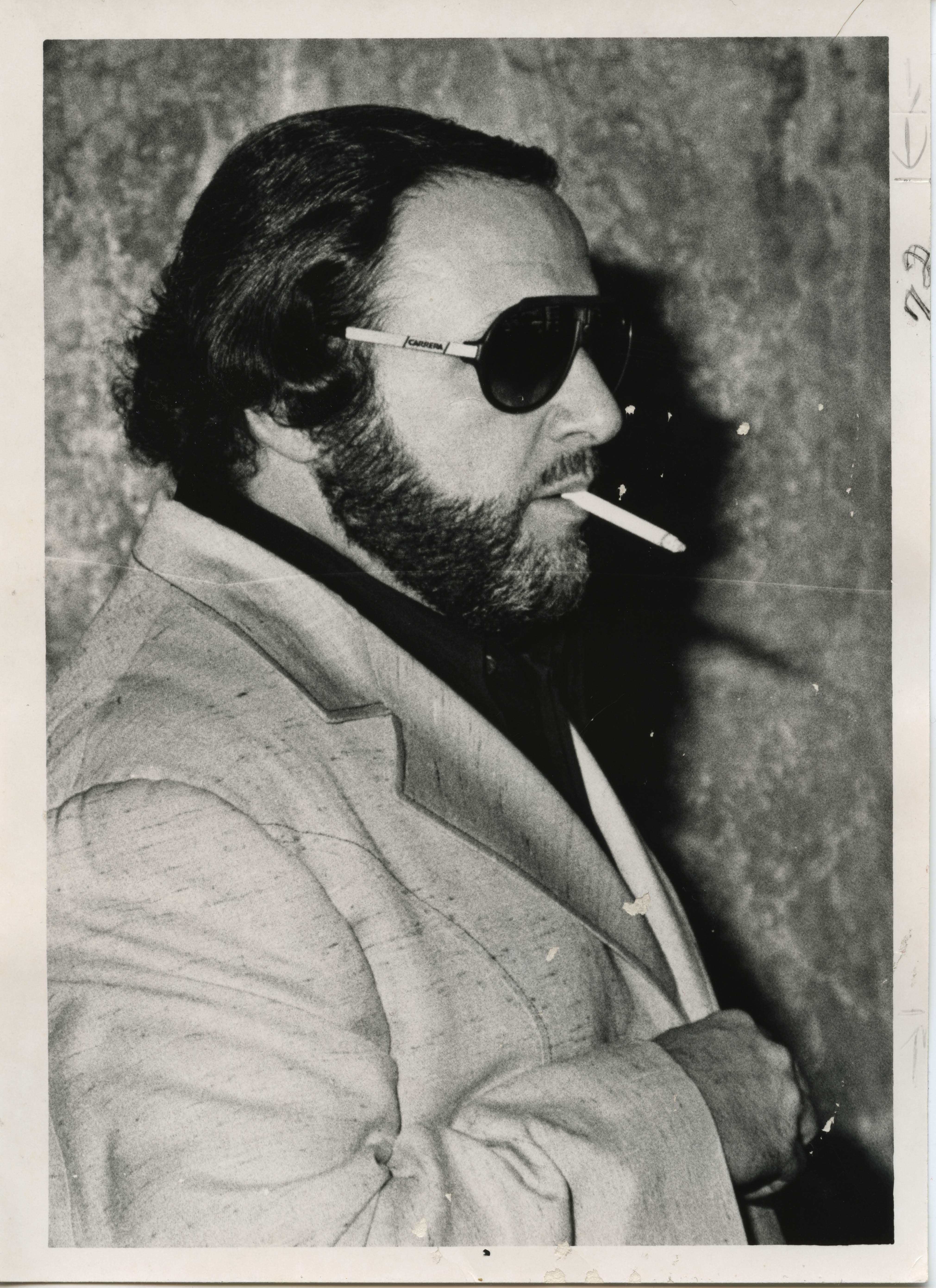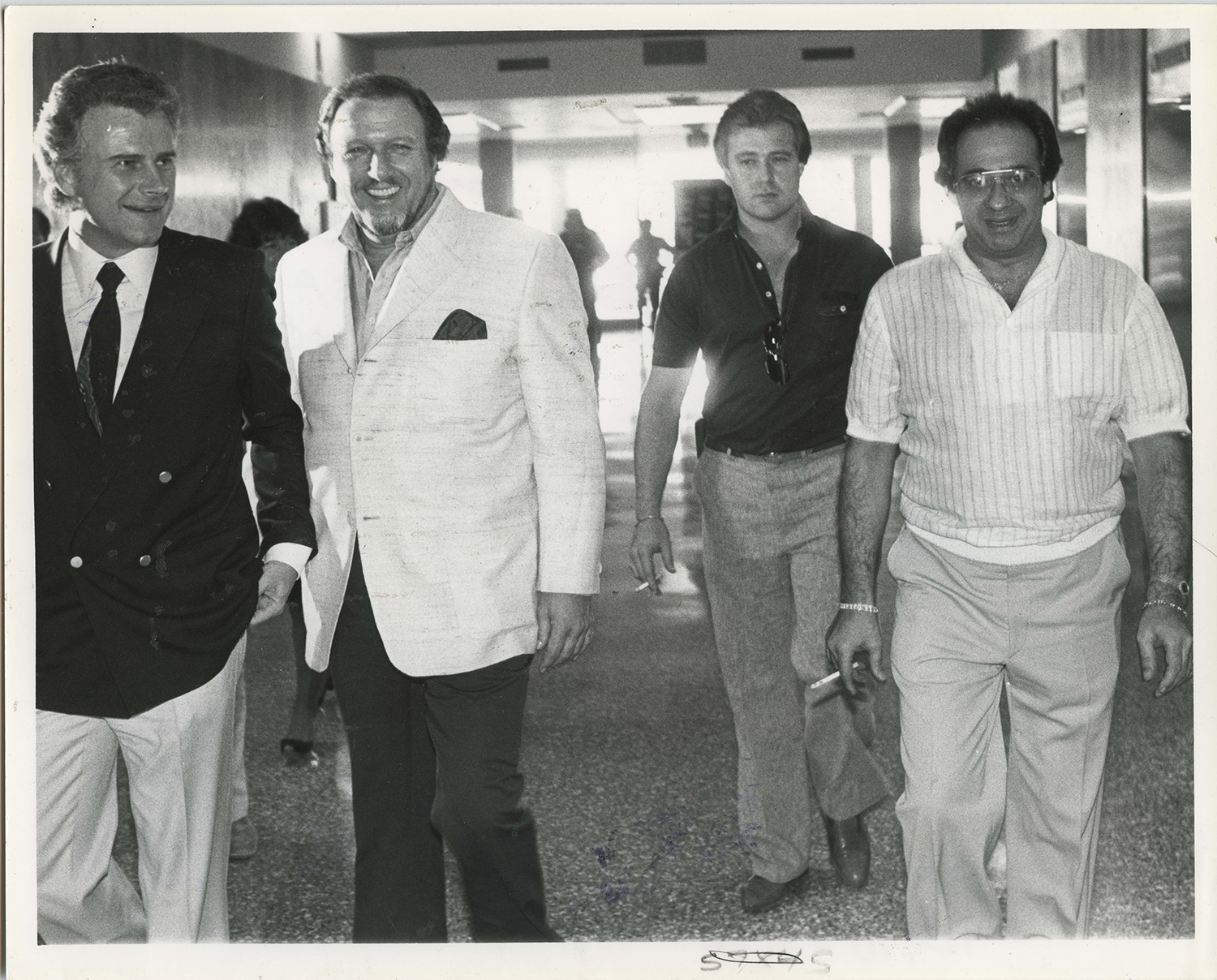Fat Herbie’s rise and fall
Twenty years after Blitzstein murder, a look back at his criminal history in Las Vegas

Second of two parts. Part One looks at Herbie Blitzstein’s murder twenty years ago.
Herbert “Fat Herbie” Blitzstein was born in Chicago in 1934. After a conviction for illegal gambling, he left the Windy City for Las Vegas in 1971 to join forces with his former crime associate in Chicago, Tony Spilotro. It was the start of a 15-year partnership in Las Vegas.
Blitzstein helped Spilotro, a top representative of the Chicago Outfit, run a jewelry store, the Gold Rush, a block west of the Las Vegas Strip. But the store was a cover for Spilotro’s criminal activities, with shares of the proceeds sent out of state to his Outfit bosses.
Spilotro assembled a company of career criminals that came to be known as “The Hole in the Wall Gang.” They pulled a series of Las Vegas burglaries, often punching holes in the walls of buildings to avoid security systems. Spilotro paid off a couple of Las Vegas police officers and had his henchmen monitor police radio traffic. Blitzstein fenced the jewelry and valuables the gang stole and provided his services to out-of-state thieves. He also handled loansharking – illegal, high-interest cash loans – mainly to inveterate gamblers. Their storefront hid a poorly kept secret as the U.S. Attorney’s Organized Crime Strike Force carefully built a racketeering case against the gang using electronic surveillance and informants.
Bertha’s blunder

Spilotro’s ring got too cute in 1981 when it cooked up a scheme to burglarize a household goods shop, Bertha’s on East Sahara Avenue, on the night of July 4, while fireworks exploded in the skies above Las Vegas. Authorities were wise to it, set the trap and once the gang started the caper, moved in and arrested much of Spilotro’s band. Blitzstein was not among them. But his and Spilotro’s other doings in town got them arrested with 16 others in 1983 on charges of racketeering, conspiracy, interstate transportation of stolen property and, in Spilotro’s case, the alleged murder in 1979 of a government informant. Both men’s cases remained in the courts for the next few years.
By 1986, Spilotro, a national household name from media coverage, was fighting a laundry list of felony charges, including three alleged murders. Outfit leaders feared he might make a deal with prosecutors and turn them in, so they had him and his brother beaten, killed and buried in an Indiana cornfield.
That year, Blitzstein received eight years in federal prison for credit card fraud and federal tax evasion. When he was paroled in 1991, he returned to Las Vegas, ready to start afresh with a different front for criminal ventures. But by then there were new underworld figures to contend with who tried to fill the void in the street rackets left by Spilotro’s death. Among the new faces was Robert Panaro, a former labor official and Buffalo crime family member who moved to Las Vegas to open a used car business that he named Good Fellows. Another was Stephen Cino, a one-time Buffalo Mob associate who joined the Los Angeles crime family before making the move.
Joe DeLuca would later testify in federal court to having met Blitzstein in Las Vegas in 1991. Blitzstein, who had just left prison, somehow got a hold of $25,000 in cash, which he gave to DeLuca to start a business to repair, buy and sell cars. DeLuca in turn gave cash earned from the business to Blitzstein, who used it for loansharking. The pair split the proceeds from both ventures. Their businesses took off, which likely did not escape the attention of Panaro and Cino.
Crime competition
Then in 1995, Blitzstein did something that would lead to his demise. He introduced DeLuca to Peter Vincent Caruso, who was well-connected with the Buffalo, Chicago and Los Angeles crime families. Perhaps Blitzstein at the time felt safe to operate in Las Vegas without considering how vulnerable he was without Spilotro. As things went well for the Blitzstein-DeLuca partnership, Peter Caruso’s greed led him to approach DeLuca to tell him he thought Blitzstein was ripping him off. He said he wanted DeLuca to help him seize Blitzstein’s cut from the repair shop and loansharking. But DeLuca told him he would not proceed without the approval of Panaro. DeLuca believed Panaro’s claim that he was a made man who answered only to a Mob boss in Buffalo, and that Panaro would protect him should something go wrong.

But Panaro would do more than that. During a meeting with DeLuca and Peter Caruso, Panaro himself laid claim to Blitzstein’s share of the street loan business, saying DeLuca could have half the loans and, to sweeten it, DeLuca could have everything from the car repair shop. Caruso told DeLuca he would burglarize Bliztstein’s home of its tens of thousands in cash and jewelry, and “if something happened to [Blitzstein], oh well.” DeLuca assumed Caruso meant Blitzstein would be killed. But Panaro replied that La Cosa Nostra leaders in New York would have to rule up or down on the hit, and he informed Cino, seen as a soldier for Buffalo’s Mob, about it.
In December 1996, John Branco, a government informant, met with Panaro and Cino. They told him to tell Peter Caruso not to assassinate Blitzstein. Panaro said after the first of the year, they would go to Blitzstein and say, “It’s all over for you. Don’t bring your f—in’ face in this f—in’ garage ever again.” Branco relayed the news to Caruso, but Panaro and Cino soon would change their minds. Meanwhile, on December 10, the Nevada Gaming Control Board recommended Blitzstein be included on its List of Excluded Persons, or Black Book, of people barred for life from entering a Nevada casino.
The conspirators scheduled a meeting, to include Branco, at a Las Vegas Denny’s restaurant for January 4, 1996. DeLuca and Panaro were the first ones there, and after they took a table, DeLuca discreetly informed Panaro that Caruso was set to burglarize and murder Blitzstein that week, to which Panaro agreed. Then Cino, Branco and Caruso walked over and sat down. Panaro whispered into Cino’s ear and DeLuca whispered into Branco’s about Caruso’s plan. Branco tried to talk them out of killing Blitzstein in favor of just muscling him out of the auto shop and loansharking businesses. It seemed to work, as Panaro, Cino and Branco made plans to go with DeLuca to the repair shop and tell Blitzstein they would use violence if necessary to force him out of the picture in favor of DeLuca and his new partners.
Branco, while testifying later in the federal murder-extortion trial for prosecutors, said the presence of Cino, Panaro and himself to threaten and extort Blitzstein “would be enough to let him know that these are members of the Mafia and if he doesn’t leave, he’s going to have problems from other people, too.”
To threaten or to kill
DeLuca would testify that on January 5, the day after the Denny’s meeting, he informed Panaro of having second thoughts about the extortion plan and feared Blitzstein might strike back at him later. Panaro reassured him the presence of Mob guys would impress Blitzstein. “You wanted him shut up, so we’re here to shut him up,” Panaro said. “He’s going to see us there, he knows he’s history.” If Blitzstein resisted, Panaro would get Branco to “pick him up bodily” and toss him from the shop. “He ain’t gonna say nothing. Just throw him out. He sees us sittin’ there.”
Panaro appeared to have advance knowledge of the pending whack on Blitzstein. “If something were to happen to him, oh well,” he told DeLuca. Caruso had already hired Mob associate Alfred Maruiello to eliminate Blitzstein. From the $50,000 he stole from Blitzstein’s home, he paid Maruiello $10,000. Maruiello took $6,500 as his fee and hired two budget hoods, Richard Friedman and Antone Davi, to carry out the hit for what was left. That was after Caruso was to burglarize Blitzstein’s townhome of its loot.
Sometime the next day, January 6, Caruso telephoned DeLuca. “That thing … that needed to be done is done,” he said. DeLuca, knowing that Blitzstein was dead, then made his perfunctory trip on January 7 to “find” the man’s corpse and call paramedics. A coroner’s autopsy concluded the victim died the evening of the 6th.
Now it was time to split up the spoils. Caruso made off with Bliztstein’s cash and valuables. Panaro directed DeLuca to add up the street loan amounts and tell Branco. It turned out Blitzstein’s outstanding loans amounted to a hefty $247,900. The auto shop netted $40,000 a year and had $50,000 worth of equipment, so DeLuca estimated Blitzstein’s half interest in it at $45,000. Panaro, Cino and Branco laid claim to equal shares of the loans and ordered DeLuca, to his chagrin, to make regular payments to them to be allowed to run the shop.
But that wasn’t enough. About two weeks later, Branco informed DeLuca things had changed again. DeLuca’s Mafia partners were extorting him this time and he had to hand over 25 percent of the repair shop’s business to Caruso and 25 percent to Panaro. Then, to show how small-time the Los Angeles “Mickey Mouse” syndicate truly was, Peter and Carmine Milano demanded Panaro’s share in the shop, with Peter Milano the winner of the low-stakes fight.

Indictments come down
They didn’t have long to enjoy it. On April 24, a federal grand jury in Las Vegas indicted 14 defendants. The feds filed 50 criminal counts, including racketeering, murder conspiracy, extortion, money laundering, passing counterfeit currency, wire fraud and car insurance fraud. Peter Caruso, Louis Caruso, Alfred Mauriello, Panaro, Cino, DeLuca, Caci, Friedman, Davi and Mauriello’s son Stephen Mauriello were among those charged. Federal prosecutors, using evidence from wiretaps and informants, alleged that members of the Buffalo and Los Angeles crime families started working together in 1995 to force their way into Las Vegas’ rather modest rackets of loansharking and extorting escort services and even a smog check business.
One after another, the defendants were either convicted or flipped against others for reduced sentences. Louis Caruso’s heart gave out and he died before his trial. Stephen Mauriello flipped on his own dad to do less time, telling the FBI the elder Mauriello hired Friedman and Davi to kill Blitzstein. Alfred Mauriello, who faced murder charges in Blitzstein’s murder-for-hire slaying along with Panaro, Cino, Friedman and Davi, agreed to testify against Friedman and Davi in exchange for a prison term of up to 33 months. Friedman and Davi got many more than that – in Friedman’s case, 300 months. A federal jury in 1999 acquitted Panaro and Cino of murder but convicted them of conspiring to extort Blitzstein to obtain his rackets. According to court records, Friedman, was set for six-month custodial release, due to his advanced age (72 years), in March 2016.
Today, Blitzstein’s murder is remembered as the last (of not very many) local Mob-related killings. The Mafia itself has registered minimal activity in Las Vegas ever since. Other memories associated with the Blitzstein hit have to do with the haplessness and pettiness of the L.A. Mob’s activities in town while observed by the FBI in the 1990s.
Frank Cullotta, a former Chicago resident, childhood friend of Spilotro and “Hole in the Wall Gang” leader who switched sides to become a federal witness, observed to the Sun in 1997 that Mob insiders had little regard for the L.A. gang. “I don’t think they’re too bright,” Cullotta said.
Images courtesy of the Las Vegas Review-Journal
This blog was originally published on January 10, 2017.
Feedback or questions? Email blog@themobmuseum.org





